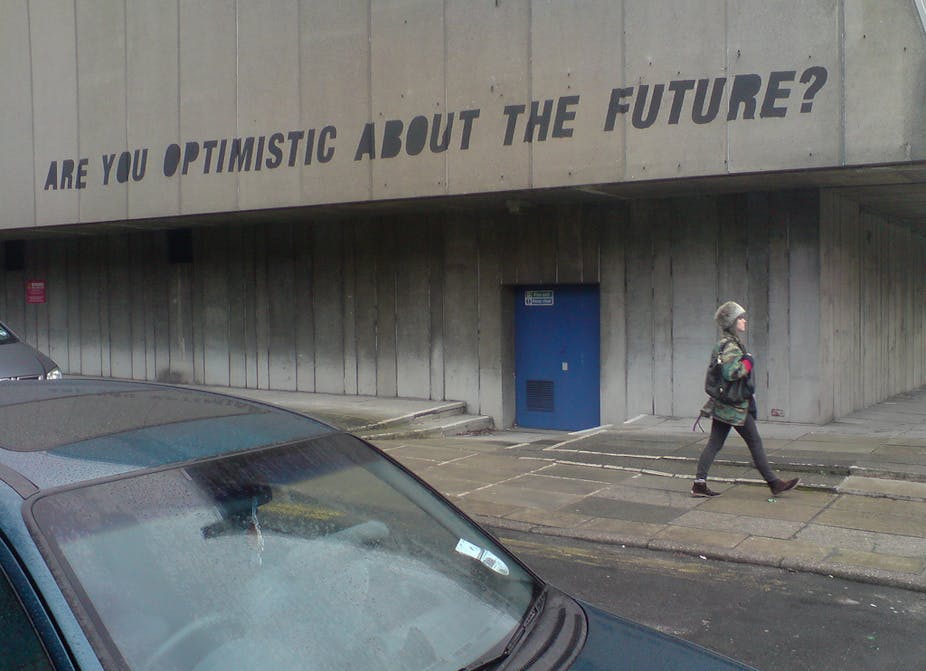Medical treatments for amphibians, resurrection of extinct species, increasing temperatures in the deep oceans and trade-offs between the financial value of fossil fuels and the magnitude of climate change. Our diverse group of 20 researchers, science advisers and one journalist identified these as among 15 little-understood issues that may affect global environmental status in the coming years.
Brought together by William Sutherland, professor of conservation biology at Cambridge University, this was the fifth annual gathering to carry out environmental horizon scanning, a formal way of systematically identifying future developments that may affect society or the natural world. These developments have not yet been realised, but may be approaching quickly. Identifying these emerging issues gives researchers, decision-makers, and the public an opportunity to pay attention, ask questions and prepare.
Published in the journal Trends in Ecology and Evolution, the horizons we identified for 2014 were based on the input of more than 350 people who raised more than 80 different topics. The final 15 were those that seemed to be most plausible, least well-known, and whose effects may be the most substantial.
A common debate over the last year or two has been whether global warming has been on hiatus since 1998. It’s true that the rate at which Earth’s surface temperature is increasing seemed to slow during the past decade. Does that mean global climate models are wrong? As it turns out, the models largely are correct. The heat isn’t missing – rather, temperatures are increasing in an unexpected place: the deep ocean.
The apparent rate of climate change and the geographic distribution of changes in climate affects decisions about energy policy. The potential environmental effects of rising deep-sea temperatures are poorly understood. How the vast ecological and geochemical systems of the deep oceans will react to heating, and how that might affect coasts, are open questions.
Two other climate change-related topics we identified for 2014 were advances in carbon-based solar cells, which we think have considerable potential as an alternative source of energy, and the response of financial markets to the concept of unburnable carbon.
For society to keep increases in global temperature below 2°C, considerable reserves of coal, oil and gas must be left in the ground. Yet the value of these reserves to the world’s largest 200 companies – an estimated US$4 trillion – is based on the expectation that the reserves ultimately will be burned. If the reserves are not burned, then the resulting decrease in their value might have serious effects on society. Investors and regulators may find themselves navigating between preventing unprecedented climate change at the risk of financial crisis, or preventing financial crisis at the risk of unprecedented climate change.
Fortunately, not every issue in our horizon scan was quite so daunting. Industrial farming of macroalgae – seaweed – has the potential to produce up to six times more biofuel than can be grown on land. At that scale, however, seaweed farming also could affect the status of near-shore ecosystems and fisheries. Would this be a good thing or a bad thing? We don’t make value judgements in our horizon scans, but we recognise that the environmental effects could be complicated and substantial, and therefore might warrant consideration.
Another coastal issue we identified is that more than 10m hectares of coastal and lowland peat swamp forest in Southeast Asia have been drained for agriculture and plantations. As a result, that land gradually is sinking. It’s expected that by the year 2100, much of Indonesia and Malaysia’s lowlands will have subsided by up to four metres. In the Netherlands, where drainage of peat long ago caused coastal areas to sink below sea level, flooding was alleviated by dykes and pumps. But similar engineering systems might not be effective in tropical regions that experience monsoons, and they typically are extremely expensive.
We recognised that at the nexus between public health and the environment are emerging biotechnological methods to sterilise Aedes mosquitoes via heritable genetic modifications. These methods also could be applied to controlling or eradicating well-established populations of non-native invasive species. Doing so might greatly increase the probability of conserving the native species with which they compete. But potential unintended effects of these methods have not been investigated in detail.
Animals such as the woolly mammoth, passenger pigeon, and thylacine someday might be resurrected by new methods in synthetic biology. In some cases the animals might be reintroduced to the wild. And, even in captive populations, the animals could play a role in research and education. The viability, safety and ethics of this work, however, have not been explored fully. It has been suggested that resurrection efforts might distract from more-practical conservation measures, and from the role that genetic diversity plays in increasing species’ potential for adaptive evolution.
Other issues we identified included increasing the size of islands over which efforts are being undertaken to eradicate invasive mammals. For example, rabbits, black rats, and feral cats have been removed from Macquarie Island, and programs are underway to remove reindeer, house mice, and brown rats from South Georgia.
Other issues we identified for 2014 were expanding the IUCN’s endangered designations to include not only species but ecosystems; developing probiotic treatments for populations of amphibians that are declining in response to chytridiomycosis, a chronic skin disease; an emerging fungal disease that is causing declines of snakes; the sharp decline, after decades of recovery, of elephant and rhinoceros populations; and the growing pressure to exploit Antarctica’s natural resources.
Our previous horizon scans identified topics including the re-emergence of rinderpest in 2011; sterile farming and deep-ocean mining in 2012; and the rapid growth of concentrated solar power in 2013. By investigating and debating the issues identified in horizon scans, the better prepared society may be in years to come.
Brandon Keim of WIRED magazine contributed to this article.

